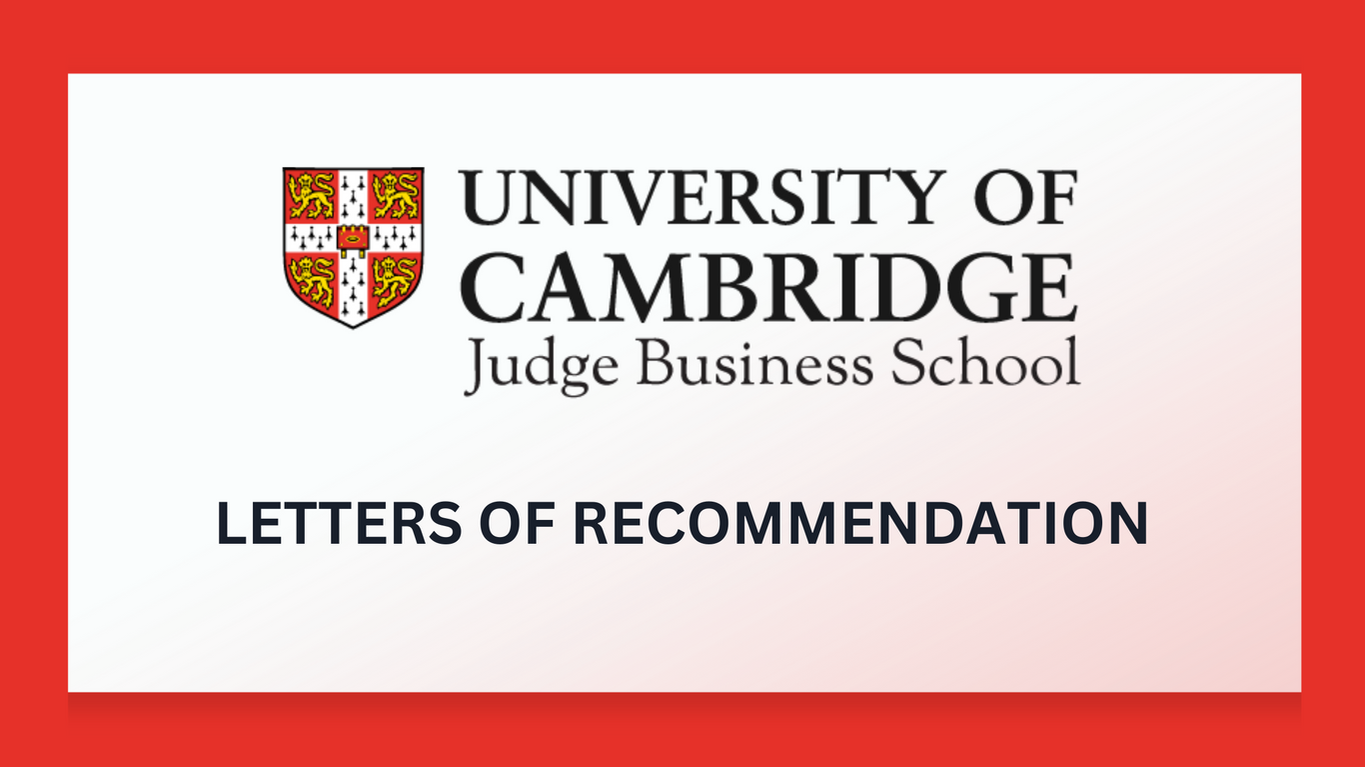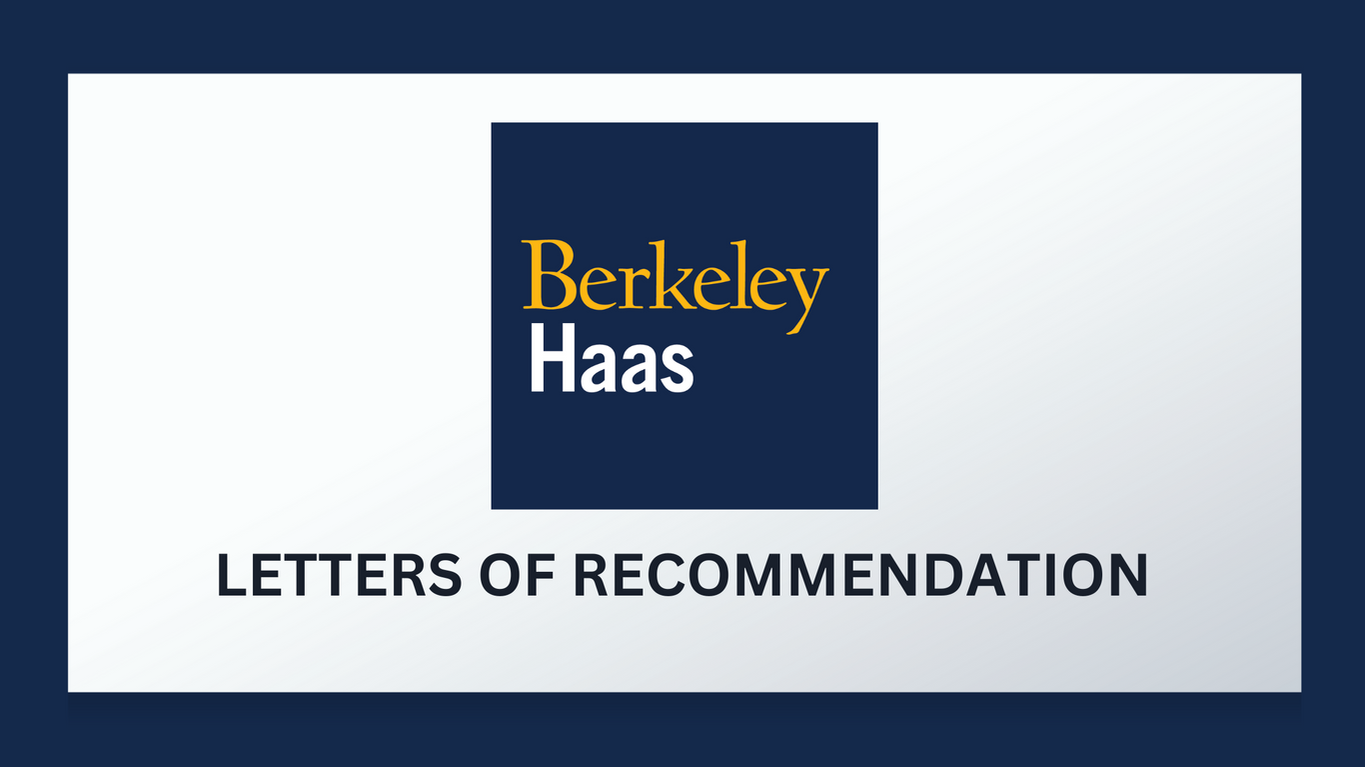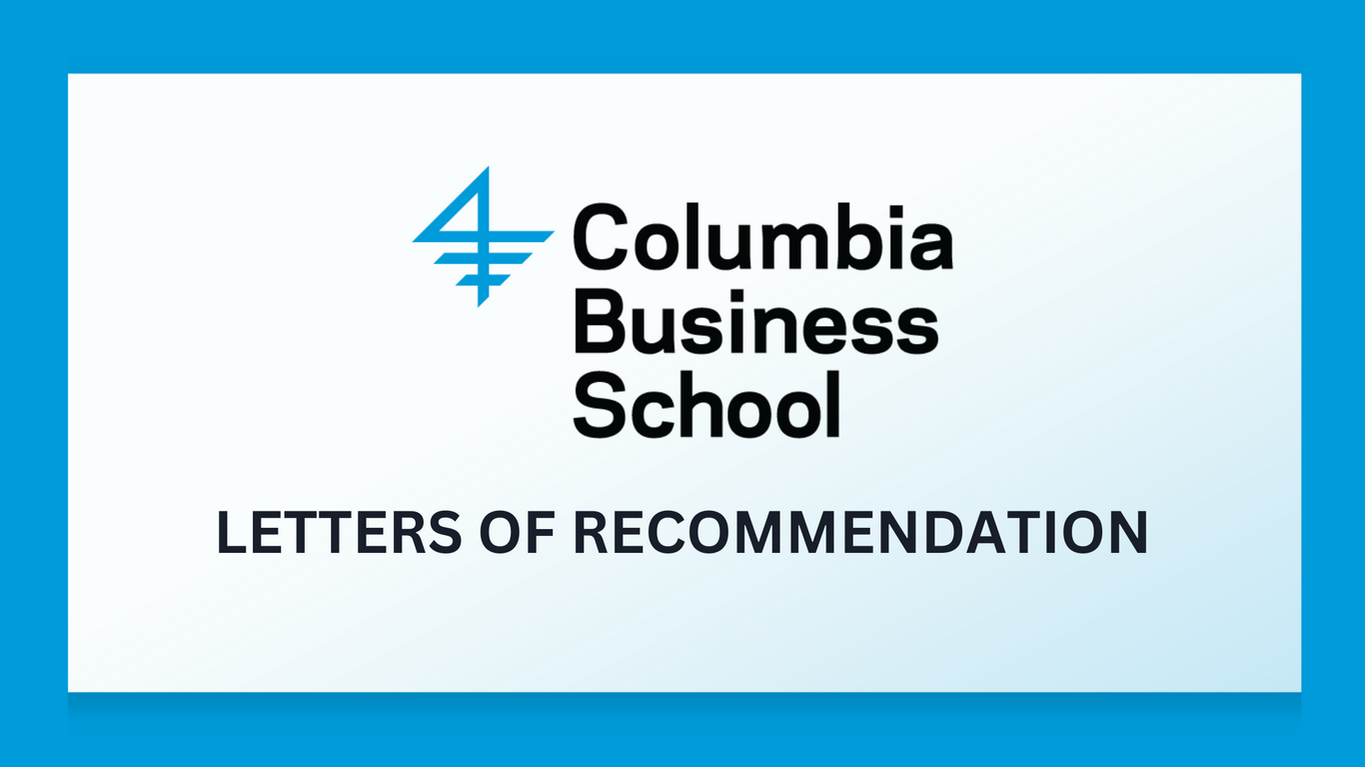
Letters of Recommendation
Letters of Recommendation (LoRs) are a mandatory component of every MBA application. Business schools rely on LoRs to get an external, objective perspective on your capabilities, character, and leadership potential and validate what you write in your essays and resume.
Contents:
Why Schools Require LoRs
For most MBA programs, you’ll need to submit 1-2 letters of recommendation, typically from professional sources, like a direct manager or supervisor. The LoR is the only part of your application not authored by you, which can make it feel out of your control. But with planning and clear communication with your recommenders, you can ensure that your recommender delivers a well-crafted LoR that strengthens your candidacy.
A strong LoR adds credibility and colour to your application, providing a fresh, third-party endorsement of your strengths and potential. The best LoRs offer specific examples, comparative performance evaluations, and honest feedback, painting a vivid picture of who you are as a professional and how you respond to challenges.
Types of LoRs
Common Letter of Recommendation (GMAC Format)
Many top business schools use the GMAC Common LoR. The Common LoR features three key sections:
Section 1: Recommender Details
This section includes the recommender’s contact information, their relationship with you, and the length and nature of your interactions.
Section 2: Leadership Assessment Grid
This section includes a quantitative evaluation of your leadership and interpersonal competencies across specific categories (for example, Achievement, Influence, People, Personal Qualities, Cognitive Abilities) using a rating scale.
Section 3: Recommender Questions
This section is often the most detailed and effort-intensive. It includes three mandatory narrative responses, as well as an optional prompt for additional comments:
a) Your role and interactions with your recommender
b) Your strengths and how you compare to peers in similar roles
c) A significant piece of feedback and how you responded
It may also include an optional question allows the recommender to share additional insights.
Here are some examples of schools that use the Common Letter of Recommendation to frame their recommendation questions:
Q1. How do the applicant’s performance, potential, background, or personal qualities compare to those of other well-qualified individuals in similar roles? Please provide specific examples. (Recommended: 300 words)
Q2. Please describe the most important piece of constructive feedback you have given the applicant. Please detail the circumstances and the applicant’s response. (Recommended: 250 words)
Q3. (Optional) Is there anything else we should know? Please be concise.
Q1. Please provide a brief description of your interaction with the applicant and, if applicable, the applicant’s role in your organization. (Recommended word count: 50 words)
Q2. How does the performance of the applicant compare to that of other well-qualified individuals in similar roles? (E.g. what are the applicant’s principal strengths?) (Recommended word count: 500 words)
Q3. Describe the most important piece of constructive feedback you have given the applicant. Please detail the circumstances and the applicant’s response. (Recommended word count: 500 words)
Q4. Are you in a position to know whether the applicant is sponsored for the MBA by his or her current employer? If so, please comment.
Q5. (Optional) Is there anything else we should know?
Long Letter of Recommendation
Schools like Oxford Saïd, Cambridge Judge, Chicago Booth, and Columbia use a long letter of recommendation that is essentially a hybrid of the GMAC format but combined into one continuous essay of 400–800 words.
It typically includes answers to the same questions asked in the Common LoR, but without strict formatting. Recommenders often use SCAR (Situation, Challenge, Action, Result) anecdotes to illustrate key points, adding nuance and flexibility.
For example:
Please also provide us with a one-two page letter of reference for the candidate. Please tell us anything that you think will help the Admissions Committee evaluate the candidate’s application, but in particular we would like you to address the following issues:
1. Elaborate and/or provide us with concrete examples if you have rated the applicant as below average, outstanding or exceptional on any of the qualities in the ‘Rate the Applicant’ Section.
2. Describe what you like most and least about working with the applicant.
3. Tell us about any particular weakness the candidate has compared to other peers/team members that you regularly work with.
4. Describe the applicant’s attitude and behaviour when working with: (a) managers/supervisors (b) peers (c) subordinates.
5. Suggest what you think the applicant will be doing in ten years.
Unique Letters of Recommendation
Certain schools such as INSEAD, NYU Stern, Kellogg, and Wharton ask highly specific, school-designed questions that may diverge significantly from the Common LoR format.
These require bespoke content and often more introspection or behavioral detail. Since these are not reusable across schools, they require increase the workload for your recommenders and require early planning.
For example:
Q1. Please provide example(s) that illustrate why you believe this candidate will find success in the Wharton MBA classroom. (Word count: 300)
Q2. Please provide example(s) that illustrate why you believe this candidate will find success throughout their career. (Word count: 300)
Q3. (Optional) Is there anything else we should know? (Word count: 300)
How to Choose your Recommender
Professional LoRs
Unless you have a very academic profile, most MBA programs prefer professional recommenders. Professors can speak to your intellect and test-taking skills, but may not have insight into your leadership, collaboration, and work ethic in real-world environments.
Duration and Depth of Relationship
Ideally, your recommender should have worked with you for at least 6 months, and preferably longer. They should know you well enough to describe your strengths through specific stories, not generic traits. Recommenders who know you in multiple capacities, for example as a team member, project lead, and mentee, can bring richer detail to their narrative.
Relevance Over Seniority
It’s tempting to go for a high-ranking executive or C-suite contact, but unless they’ve directly managed or worked closely with you, their letter will likely lack substance. Admissions committees can easily tell when a letter is full of vague praise and empty platitudes. A direct supervisor who has observed your day-to-day work and growth is far more credible and impactful than a distant “big name.”
Ability to Comment on Performance and Feedback
Strong recommenders are those who can speak to your professional performance, how you receive and act on feedback, and your growth trajectory. Ask yourself: “Has this person ever given me formal or informal feedback? Have they seen me manage a challenge or grow over time?” If yes, they are a viable recommender.
Managing your Recommenders
Asking for a LoR can feel like announcing your departure, especially if your employer isn’t aware of your MBA plans. To minimize friction, frame the request in a way that makes it clear that you value their opinion and that their endorsement would be pivotal for your career growth.
Equip them with the right material, but don’t write it for them, even if they ask you to. Writing your own recommendation in someone else’s voice is hard to pull off convincingly, and AdCom will be able to tell. Instead, provide them with:
-
A concise summary of your achievements
-
Context on your career goals and MBA narrative
-
Key projects or anecdotes worth mentioning
-
Performance reviews or feedback examples
-
A timeline for each school and format requirements
Offer to answer questions, brainstorm stories, or give them bullet point suggestions, but encourage them to write the letter themselves.
If you’re applying to multiple schools, the recommendation process can quickly become burdensome. Let your recommenders know your full application plan (e.g., four schools in Round 1, three in Round 2), and show them how the Common LoR reduces the overall workload. Early and open communication ensures they aren’t overwhelmed and don’t abandon the process halfway through.



What your Recommender Should Write
Your recommender’s narrative should complement your essays, resume, and interview messaging. While they shouldn’t repeat your achievements verbatim, the tone and substance of their letter should support your story. Before they begin writing, have a high-level conversation about what you’re emphasizing in your application, like your leadership style, career switch rationale, or global experience.
A recommendation that mentions a growth area or weakness can actually be more believable and powerful than one that is all praise. Help your recommenders identify real weaknesses that are improvable and not at odds with your overall narrative. For example: trouble delegating, difficulty with detail orientation, or hesitancy to speak up in large groups. Most importantly, ask them to describe how you worked to improve this trait, which shows humility, resilience, and growth.
Some pitfalls to avoid:
❌ Recommenders copying your resume into prose form.
❌ Letters that are too short or vague.
❌ Overly technical jargon without context.
❌ Using clichéd weaknesses (“I work too hard”) or generic, fluffy praise (“They are an extremely diligent leader).

















